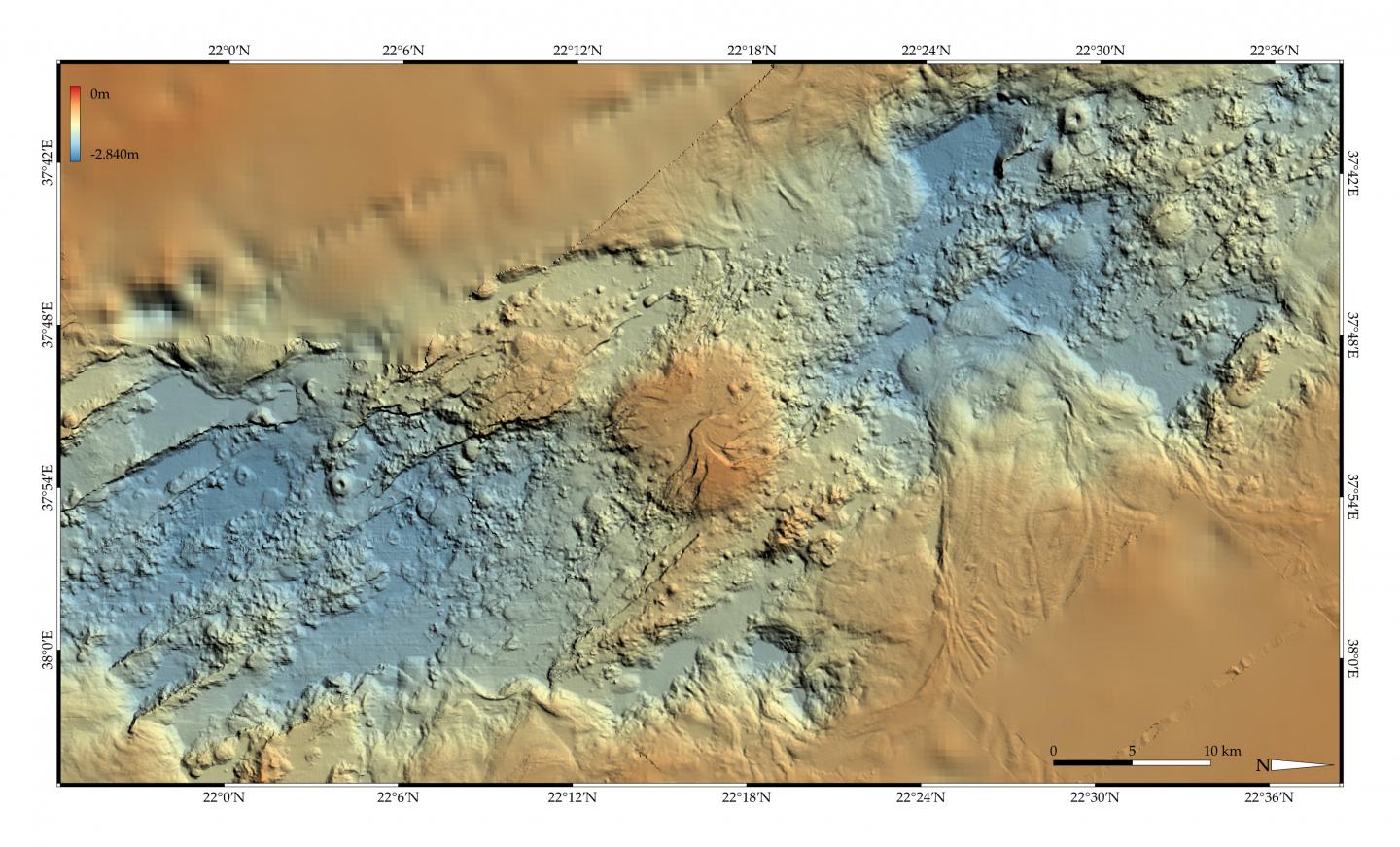It may instead be an ocean, because an ocean basin exists between Africa and the Arabian Peninsula. The Greeks did not know that and the problem in knowing now is that the oceanic crust along the narrow, north-south aligned rift is widely buried under a thick blanket of salt and sediments, which complicates direct investigations.
A study says it makes a good case for the Red Sea not only an ocean but being quite mature and having an almost classical oceanic evolution.The scientists used high-resolution seafloor maps and chemical investigations of rock samples plus gravity and earthquake data to develop a new tectonic model of the Red Sea basin. Gravity anomalies have already helped to detect hidden seafloor structures such as rift axes, transform faults and deep-sea mountains in other regions, for example in the Gulf of Mexico, the Labrador Sea or the Andaman Sea.

Bathymetric chart of a part of the Red Sea. Image: GEOMAR
The authors compared the gravity patterns of the Red Sea axis with comparable mid-ocean ridges and found more similarities than differences. For example, they identified positive gravity anomalies running perpendicular to the rift axis, which are caused by variations in crustal thickness running along the axis. "These so-called 'off-axis segmentation trails' are very typical features of oceanic crust originating from magmatically more active, thicker and thus, heavier areas along the axis. However, this observation is new for the Red Sea," says Dr. Nico Augustin of GEOMAR Helmholtz Centre for Ocean Research Kiel.
Bathymetric maps as well as earthquake data also support the idea of an almost continuous rift valley throughout the Red Sea basin. This is also confirmed by geochemical analyses of rock samples from the few areas that are not overlain by salt masses. The samples from the Red Sea rift have geochemical fingerprints of normal oceanic crust.
With this new analysis of gravity and earthquake data, the team constrains the onset of ocean expansion in the Red Sea to about 13 million years ago. "That's more than twice the generally accepted age," Augustin says. That means the Red Sea is no longer a baby ocean, but a young adult with a structure similar to the young southern Atlantic some 120 million years ago.
Will geologists agree that the Red Sea is just a proper name, like String Theory calls itself a theory, and that it is not only an ocean, but a mature one? Stay tuned.





Comments